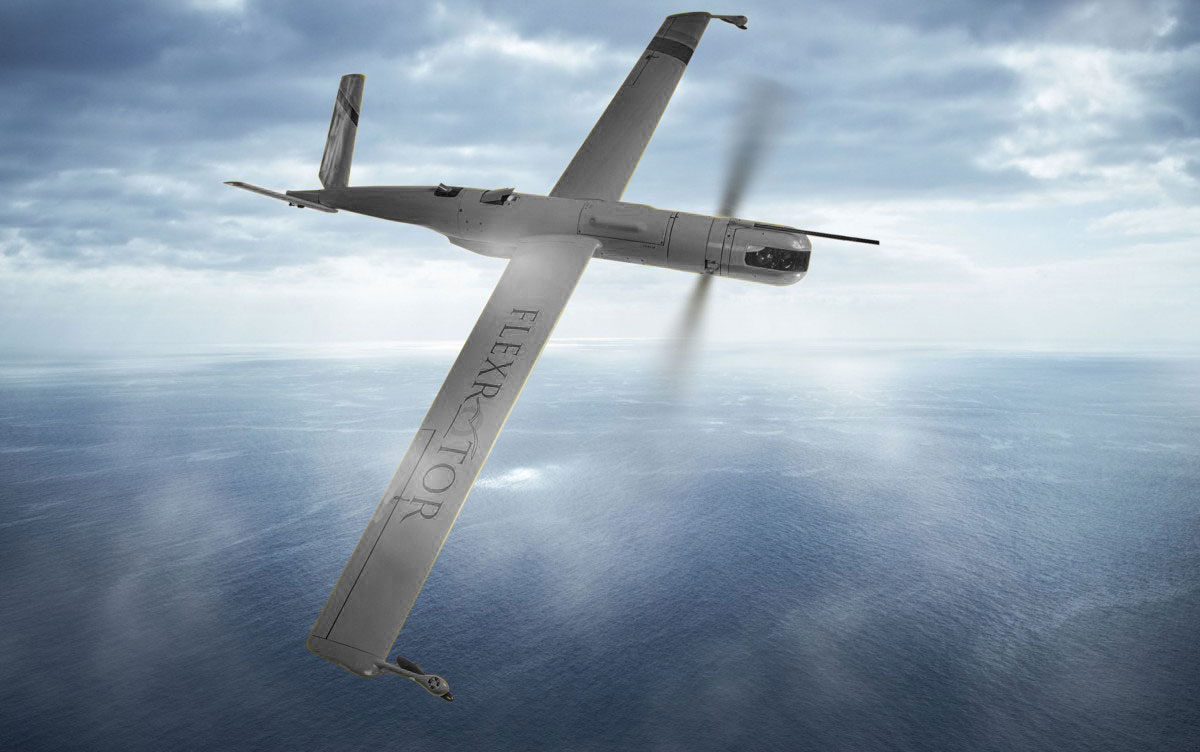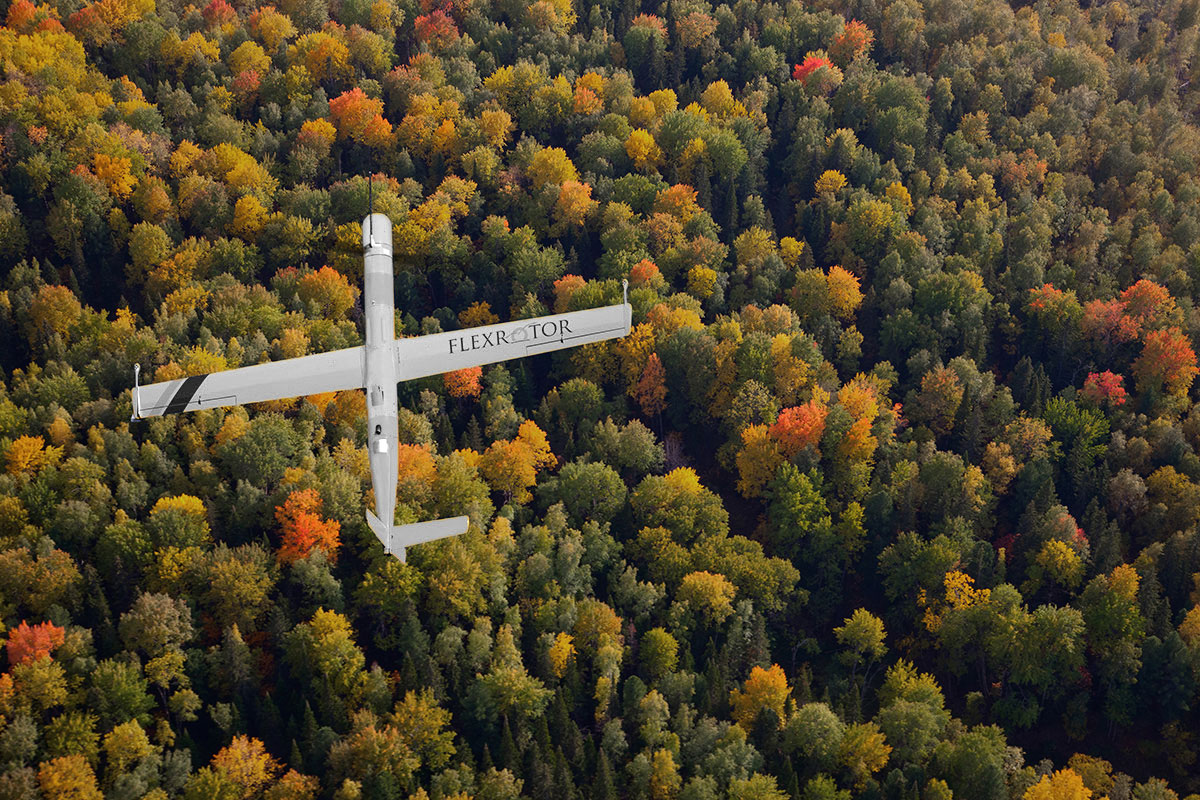

The compact footprint of Flexrotor enables easy handling and ready installation on vessels. The aircraft can operate from a small helideck and can be quickly stowed in its assembly box for safe handling and compact storage within the confines of shipboard spaces.
Shipboard equipment includes data links, antennas and an operator station. This station combines video and telemetry from the aircraft with inputs from shipboard equipment such as radar, AIS and GPS. For example, the operator can command the aircraft to fly to, orbit, and image a waypoint represented by a bird-radar target, or to search in its vicinity.
Targets can be automatically identified and tracked, with the aircraft maneuvering and the turret pointing, to keep a selected target centered in view. AIS can be carried by the aircraft for over-the-horizon traffic monitoring. Imagery can be viewed in real-time, or in subsequent review, on networked displays and WiFi devices throughout the ship.
Flexrotor enables Intelligence, Surveillance, Reconnaissance (ISR), communications relay and many other missions. Flexrotor’s endurance (up to 32 hour, fuel and payload dependent) ensures persistent mission support.
Flexrotor can operate from small spaces on land, such as a tree-ringed clearing, and its folding legs allow it to operate with little support equipment. The aircraft and equipment needed for such a site can be brought in by a pick-up truck or light aircraft.
In flight, the aircraft can send NTSC/PAL-quality video to an operator’s station more than 100 km away and its broadcast can be picked up by nearby users, such as a firefighter on-scene, with an iPhone. The operator can use the turret for search and tracking, or can perform a survey while recording HD onboard for postflight review.